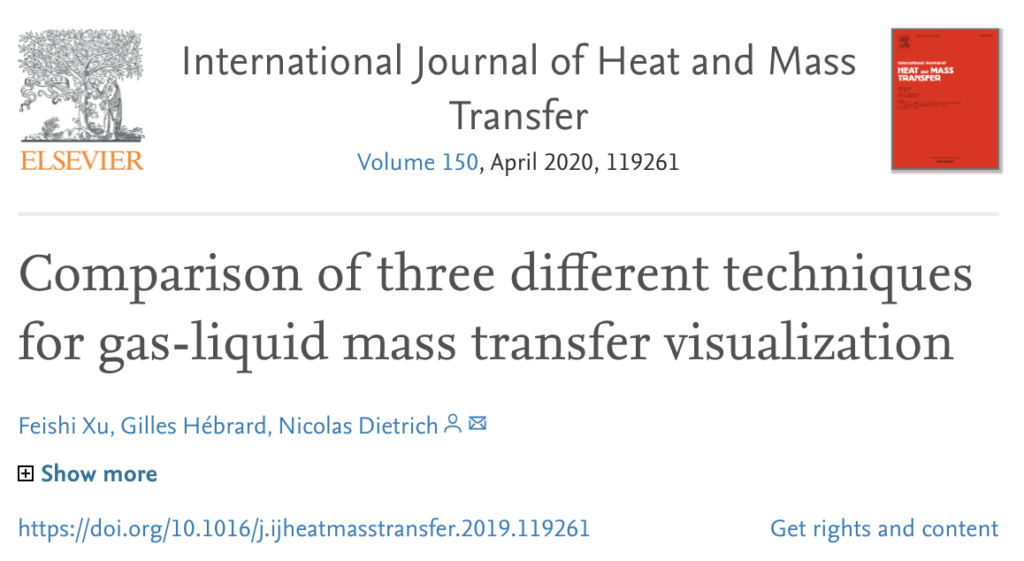
Abstract
In this article three different techniques for visualizing gas-liquid mass transfer are reviewed according to their applications in air-water systems. The three techniques are: Planar Laser Induced Fluorescence (PLIF with the use of fluorescent resorufin), PLIF with Inhibition (PLIF-I with the use of a ruthenium complex), and a colorimetric technique (using a redox reaction with the pink-colored dye resorufin). For comparison purpose, the three techniques were conducted in the same experimental set-up to characterize the local oxygen mass transfer from a single air bubble (with equivalent diameter ~1 mm) rising in water. This paper rigorously compares these three techniques and aims to point out their advantages and limitations. The comparison was divided into two parts: the visualization and the quantification of the mass transfer. The discussion focused on the image quality, the required equipment, and the accuracy of the quantification results including the mass flux, the diffusion coefficient and the mass transfer coefficient. A guideline was provided for choosing the technique that most accurately visualizes and characterizes the local mass transfer in gas-liquid systems.
OPEN FULLTEXT: https://hal.insa-toulouse.fr/view/index/docid/2435885